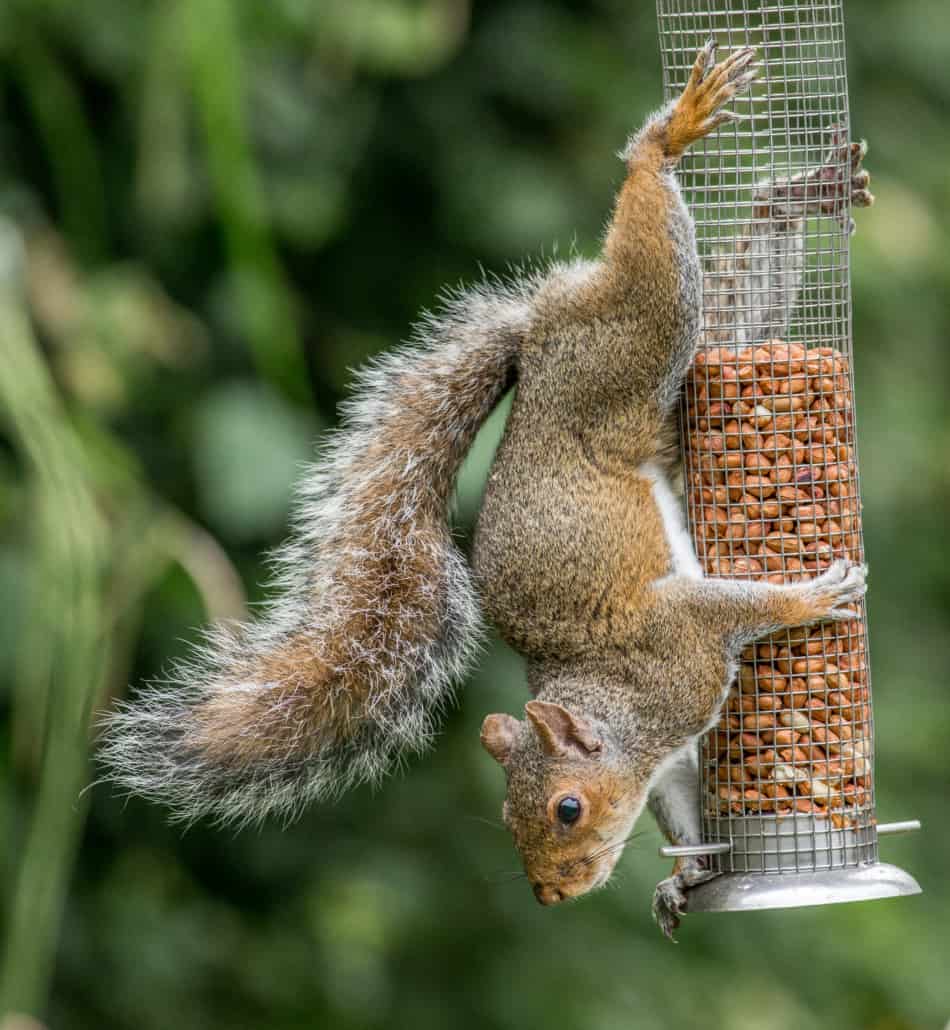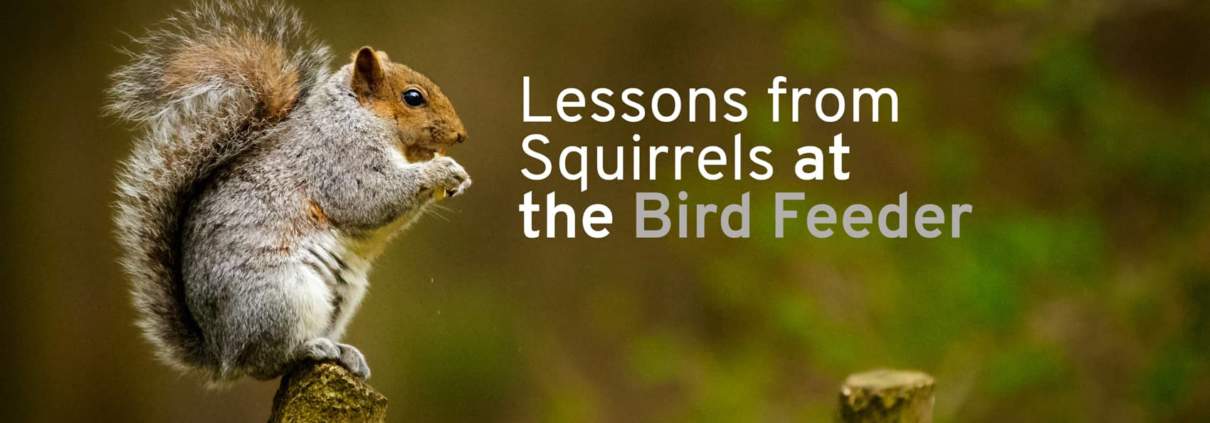From the Backyard to Twitter
In our backyard we’ve had a rather elaborate set-up of four bird feeders for the past few years, and my wife has assumed the role of the “bird queen”, regularly keeping them filled all summer.
We’re treated to almost daily sightings of cardinals and blue jays, among others.
Thanks to “spillage” the visitors make a big mess below, allowing some local rabbits from the neighbouring golf course to also feed on the seeds, which is a nice bonus.
Of course there are also other, less welcome, rodents.
Acrobatic Squirrels
Witnessing the efforts that squirrels go through to get their share of the bird food, you can only be amazed at their creativity.
They’re also cute enough, and certainly prove themselves worthy of the food they steal from the birds thanks to their work ethic.
It’s been pointed out that without their fluffy tails they’re just rats that know how to climb, but they do have those cute tails.
So many people make the effort to feed only birds and not squirrels that there are literally hundreds of designs of feeders available that have been conceived specifically to thwart the squirrels’ efforts.
The Twitter Cartoon
Being a witness to the heroic efforts put out by both the squirrels and my wife to keep the feeders full for our avian friends, my antennae are attuned to stimuli relating to this constant battle.
Lo and behold while scrolling my Twitter feed recently I noticed a little cartoon that hit home.
The drawing featured a squirrel in a precarious position getting his fill from one of those feeders designed to keep him at bay, much like the one in this photo:
And the Thought Bubble Said…
The punch line was in the thought bubble, which let us in on what the little rodent was thinking as he feasted on the seeds:
“This squirrel feeder sure wasn’t designed very well”
I had not seen that coming, and enjoyed the chuckle.
And then I thought about how this lesson could be tied into the wonderful world of families who are preparing for an eventual transition of their business or wealth to the next generation.
Isn’t That a Bit of a Leap?
I mentioned my antennae earlier, and they’re attuned to this world 24/7/365, so it wasn’t much of a leap for me.
There are certainly some analogies and metaphors that I can derive from this cartoon, but I’m not sure that any are conclusive.
But we can have some fun kicking them around, so I hope you’ll join me here.
Your Family of Birds
I think it’s pretty safe to assume that the birds that you want to feed are the family members. You want them to have food so that they survive and thrive and keep coming back.
So who are the squirrels? This is where it gets more confusing, or maybe just more fun.
The squirrels could be all the other forces of nature that work against families who are trying to avoid the fate of families who succumb to the “shirtsleeves to shirtsleeves in three generations”.
What About the Cartoon Squirrel?
We can’t hold anything against squirrels in general, because they’re just doing what their instincts are telling them to do, and they also need to eat.
But what about the particular squirrel from the cartoon, who actually thought that the food was being set out there for him?
I have an idea about who he represents and I need to be careful how I put this.
In my role guiding families through their intergenerational transitions, those families invariably work with other professionals who take care of the legal, structural and tax minimization details.
On occasion, some of those experts can take on a bit of a squirrelly attitude.
Don’t Do It “Bass Ackwards”
I suppose they’re also only doing what their instincts tell them to. When families approach such experts not knowing what’s most important to them, priorities may get skewed and tax avoidance or limiting what heirs can do may end up driving things.
To me when the structures are put in place before the family has figured out what their legacy should look like, it’s kind of “bass ackwards”.
You really should figure out the family part first and then get the pros to draft the perfect structures to fit that.
The priority needs to be the birds, not the squirrels.




